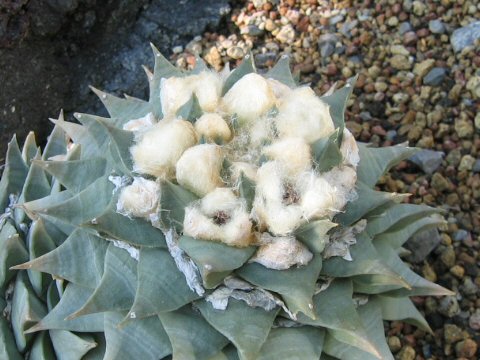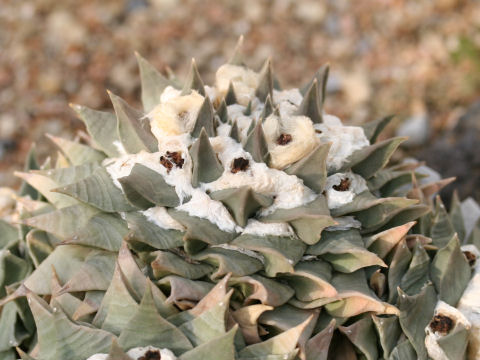 |






|

|
AJÌeLTXB©çLVRɪzµÄ¢Ü·Bòªª èAnÊæèãɼ
óÉ·è ªèÜ·B³R`PQZ`A¼aªPO`QTZ`ÙÇÅADFܽÍÂÎFÌOp`Ì÷úÌtªdÈèÜ·BHÉFܽÍsNFÌÔð穹ܷB
|

|
T{eÈAIJvX®Ì²OT{eÅAw¼Í Ariocarpus retususBp¼Í False peyoteB
|

|
The False peyote (Ariocarpus retusus) belongs to Cactaceae (the Cactus family). It is a living rock cuctus that is distributed from Texas in the United States to Mexico. It has caudex, which rises hemispherically above the ground. It is 3 to 12 cm tall and 10 to 25 cm in diameter with overlapping gray or blue-green, triangular, fleshy leaves. White or pink flowers bloom in the fall.
|

|
[ã] åãsß©æuçâ±ÌÔÙvÉÄA2003N1213úBeB
[] ¯ãÉÄA2003N1114úBeB
[º] ¯ãÉÄA2005N1207úBeB
|




